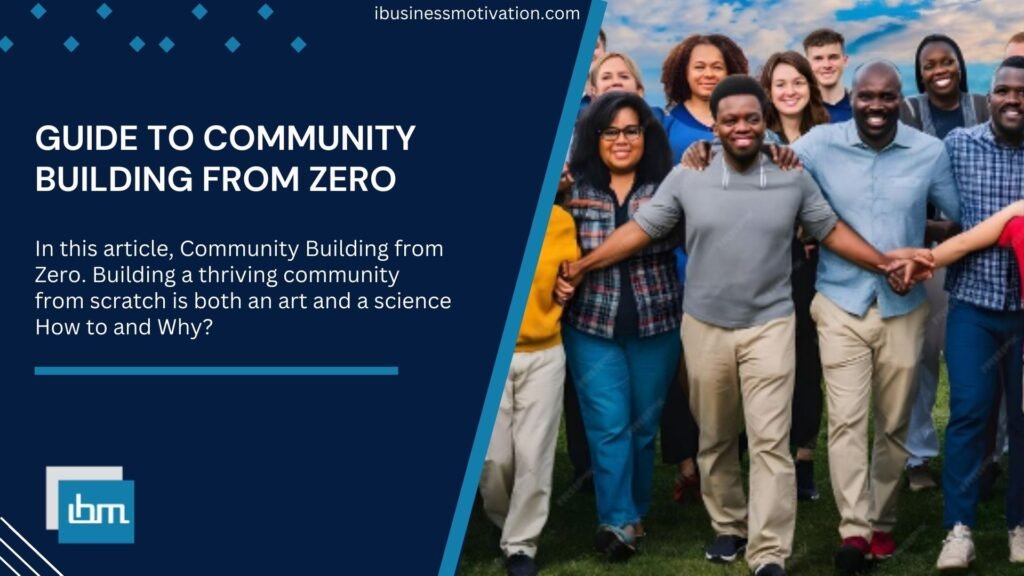Reviewed by: Jayprakash Prajapati | Last updated on November, 14, 2025
In the swirling, ever-shifting ecosystem of social media, 2025 isn’t just another chapter in the digital playbook it’s a turning point. For marketers, this year demands something more profound than campaigns, metrics, or clever captions. It calls for sensitivity, foresight, and above all, a genuine understanding of human behavior as it unfolds online.
As someone who’s walked the long road from the early Facebook boom to the sophisticated ad-tech present, This year feels like a culmination of past experiments and a launchpad for new philosophies in marketing.
What is Social Media Trends Marketers Should Follow?
Social media trends marketers should follow are evolving patterns, behaviors, and strategies that shape how brands connect with audiences online. These trends aren’t just passing fads they reflect deeper shifts in user expectations, technology, and communication. In year, following social media trends means being more human, more interactive, and more intentional.
It’s about tapping into real conversations, using AI tools wisely without losing your authentic voice, and focusing on meaningful engagement over vanity metrics. From short-form videos dominating attention spans to the rise of personalized content and social commerce, each trend gives marketers an opportunity to stay relevant and grow their brand influence.
Successful marketers don’t chase every trend they choose the ones that align with their values and audience needs. Staying updated with these trends ensures you’re not just seen, but remembered, trusted, and followed for the long term. That’s the difference between social media presence and real impact.
The Emotional Pulse of Social Media.
Something fundamental has changed in how people show up online. It’s not just about showcasing picture-perfect moments anymore; it’s about being seen truly seen. Platforms have matured into spaces where vulnerability meets community, and where creators are not just entertainers, but also counselors, mentors, and storytellers.
For marketers, this shift is seismic. You can’t sell a product anymore with just surface glitz. Your message needs to touch something deeper. That lipstick ad, that fitness app, that online course each needs to be positioned within a story of transformation, connection, and emotional truth. In year, the most effective campaigns are those that empathize first, sell second.
In year, social media won’t be about platforms it will be about presence. Marketers who succeed will no longer chase trends for the sake of visibility, but will instead create meaningful experiences that echo beyond the screen. The future belongs to those who can humanize their brand and communicate with empathy, transparency, and cultural awareness. Trends may change, but people always remember how you made them feel. It’s not about being first it’s about being relevant, thoughtful, and real. And when you’re real, you’re remembered. The likes, shares, and comments will follow the value you deliver. That’s the new social currency.
Rise of Micro Realities and Niche Communities
Big is no longer always better. If 2020–2023 was about viral reach and massive followings, this year is about micro-realities small, intimate digital communities where people find their Fans. Platforms like Reddit, Discord, and even niche corners of Instagram and TikTok are becoming more relevant for brands than ever.
I’ve seen startups go from zero to loyal customer base in six months, simply by embedding themselves in these smaller spaces. They listen, contribute, and grow organically. It’s not fast. It’s not always flashy. But it’s sustainable. For marketers in year, finding your brand’s “microverse” and living there matters more than trying to conquer the internet all at once.
The Invisible Algorithms That Feel Like Friends
Social media algorithms in year are smarter, more predictive, and disturbingly accurate. But users aren’t necessarily resisting them anymore they’re embracing them, often unknowingly. The difference now is that people want experiences that feel curated, but not manipulated.
As marketers, the challenge is delicate: How do you blend seamlessly into a user’s journey without feeling invasive? It requires thoughtful content mapping, AI-assisted but human-led personalization, and respecting boundaries. A good campaign in year doesn’t just show up on a user’s feed it feels like it belongs there, like it was meant for them. Because it was.
If 2024 was the year of adaptation, this year is the year of personalization. Audiences are no longer passive they’re participants. They expect content crafted not just for a demographic, but for their unique mindset and moment. Marketers must move from mass communication to micro-connections. Success won’t come from louder voices, but from deeper resonance. You’ll need to speak less about yourself and more about their world their challenges, their desires, their values. The more you listen, the more you’ll earn the right to speak. And in a landscape filled with noise, authenticity will be the last standing amplifier.
Storytelling is No Longer a Strategy It’s Survival
If you don’t have a story in year, you don’t have a brand.
Stories drive everything now. From viral videos that turn small-town chefs into global sensations to authentic founder narratives that breathe life into B2B startups, the story is the product.
The best-performing content isn’t over-produced; it’s vulnerable, messy, true. I recently saw a skincare brand post a raw, unfiltered video of their founder talking about adult acne and mental health. That one video did more for their brand equity than a year’s worth of ads. Because in a world full of filters, truth shines the brightest.
AI Isn’t the Future It’s the Present Partner
Artificial Intelligence is no longer a disruptor it’s a collaborator. Social media marketers in year are co-creating with AI tools. From predictive caption generators to real-time trend analyzers and dynamic content editors, AI is part of the daily workflow.
But here’s the nuance: The best marketers aren’t outsourcing creativity to AI. They’re using AI to amplify human creativity. There’s still no replacement for human insight, cultural nuance, or emotional resonance. AI can suggest what’s working; it’s up to the human to decide why it matters.
The Human Face of Data
Gone are the days when data was just numbers on a spreadsheet. In year, data tells stories. Social listening tools, sentiment analysis, and real-time engagement dashboards are being used not just to measure success, but to understand emotions.
I often tell teams: your data isn’t just traffic and conversion rates it’s a heartbeat. It’s telling you what your audience feels. Learn to read that pulse. When engagement dips, it’s not always an algorithmic issue it could be that your message has lost emotional relevance. The best marketers in year are not just analysts; they’re empaths with dashboards.
From Influencers to Influence Architects
The influencer game has matured. It’s not just about pretty faces and follower counts anymore. In year, the people who move markets are influence architects individuals who’ve built trust through years of consistency, authenticity, and service to their community.
Brands can no longer afford to choose influencers based on vanity metrics. They need partners who live the brand’s values, who speak the same language as their followers, and who co-create with integrity. I’ve seen massive ROI come from collaborations with creators who had fewer than 20k followers but whose audiences listened to every word they said.
What’s changing in year is not just the technology, but the psychology. Social media is shifting from algorithm driven convenience to emotion-driven trust. Every scroll is a search for identity, belonging, and truth. As a marketer, your job isn’t just to post it’s to understand. Understand what keeps your audience up at night, what inspires them, what they avoid, and what they aspire to. Brands that succeed on social will be the ones who listen like therapists, think like strategists, and speak like trusted friends. That’s not just content that’s connection. And connection is the heartbeat of modern marketing.
The Silent Power of Visual Language
As attention spans shrink, visuals become not just supporting elements but the core message. A five-second clip, a symbolic image, a color palette these are the new verbs and adjectives of digital communication.
Marketers in year must speak fluent visual. That means understanding aesthetic trends, motion graphics, AR overlays, and even meme culture at a granular level. But more than that, it means creating visuals that feel. Because in year, it’s not just about looking good it’s about making people feel seen.
Platforms are Personas
Each social platform in year has evolved into a distinct persona. Instagram is the aesthete. TikTok is the rebel storyteller. LinkedIn is the intellectual networker. YouTube is the patient educator. Threads is the philosophical conversationalist.
Marketers must tailor their voices accordingly. A one-size-fits-all strategy is not just ineffective it’s tone-deaf. Success now lies in understanding each platform’s culture and communicating in its native language. Your tone, pacing, and even your font choice must reflect the ecosystem you’re operating in.
Purpose is Not Optional Anymore
Consumers in year are relentlessly asking: Why should I care?
And brands must answer with purpose. Not performative, hashtag-friendly statements but consistent action rooted in genuine beliefs. Whether it’s sustainability, inclusivity, or mental health, your brand must stand for something. And that stand must show up in your social content.
I remember working with a brand that pivoted their entire product line to be zero-waste not just as a marketing angle, but because their team believed it was the right thing. Their story, told through behind-the-scenes reels, founder voice notes, and customer testimonials, didn’t just sell products it built a movement.
We often chase the latest tools, trends, and templates, but forget that social media is, at its core, human. In year, the edge will go to brands that dare to show vulnerability, creativity, and truth. It’s no longer about polished perfection it’s about emotional depth. People crave realness: a behind the scenes moment, a raw insight, a heartfelt story. The brands that open up will win loyalty. Not because they have the best tech or budget, but because they have the courage to be seen as they are. That level of truth creates gravity. And gravity, in marketing, is everything.
The New Metric: Meaningful Engagement
Likes are cheap. Shares are casual. But in year, the gold standard is meaningful engagement. Comments that reflect connection. DMs that express transformation. Saves that indicate value.
You can no longer fake resonance. If your post has thousands of views but zero conversation, something’s broken. Real success lies in building content that invites response not just reaction. You don’t just want to be seen; you want to be felt. That’s what drives loyalty.
Collaboration is the New Competition
In year, the smartest marketers aren’t looking sideways to copy they’re looking across to collaborate. Cross-brand campaigns, creator collectives, even co-authored social series are dominating timelines. This era isn’t about hoarding attention; it’s about sharing it in creative, culturally relevant ways.
One of the most talked-about campaigns I saw recently involved two totally different brands one in fashion, one in wellness coming together to explore the concept of self-expression. It wasn’t transactional; it was transformative. And it expanded both of their audiences in the process.
The Future Is Slow
Perhaps the most counterintuitive trend of all: slowness.
In a world addicted to speed, This year is witnessing a quiet rebellion a return to depth, reflection, and intentional pacing. Slow content is rising: thoughtful essays, multi-part video series, long-form podcast conversations.
As a marketer, resisting the pressure to constantly go viral and instead choosing to build trust slowly might be the most revolutionary act of all. People remember what made them pause. What made them breathe. What made them think.
Social media in year will be a digital mirror one that reflects not just trends, but values. Audiences are tuning out hollow content and tuning into purpose. This is a wake-up call for marketers: your content must be rooted in meaning, not manipulation. Every post must serve something bigger than reach. It must ignite conversation, spark thought, or drive positive change. Whether you’re a startup or a global brand, the question is the same: what do you stand for when the algorithm isn’t watching? Because in the end, the algorithm is changing, but human intuition isn’t. Purpose driven storytelling is not a trend it’s a timeless strategy.
Conclusion:
If there’s one thing year is teaching us, it’s that marketing is no longer about manipulating behavior. It’s about understanding humanity. It’s about listening with care, showing up with truth, and creating with heart.
In the end, navigating social media in year isn’t about chasing the next shiny trend or pumping out content just for visibility. It’s about understanding that people want to feel seen, heard, and connected even through a screen. The marketers who’ll win won’t be the ones who blindly follow trends, but the ones who interpret them with empathy, intention, and a deep respect for their audience.
Platforms will evolve. Algorithms will change. But the essence of connection remains timeless. So, as you step into this next chapter of digital evolution, don’t just ask, “What’s trending?” Ask, “How can I truly matter?” That’s the mindset that will carry you beyond the likes and into real, lasting impact.
Social media trends will come and go. Algorithms will keep shifting. But people our fears, our hopes, our longing to connect remain constant. The best marketers in year are not just trend chasers. They are meaning makers.
So as we navigate this complex, beautiful, sometimes chaotic digital landscape, let’s remember: behind every scroll is a soul. And it is our privilege to speak to it.




